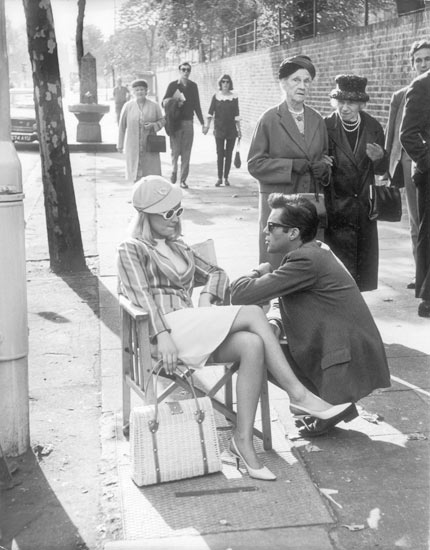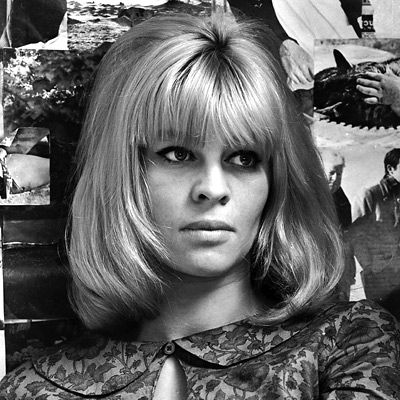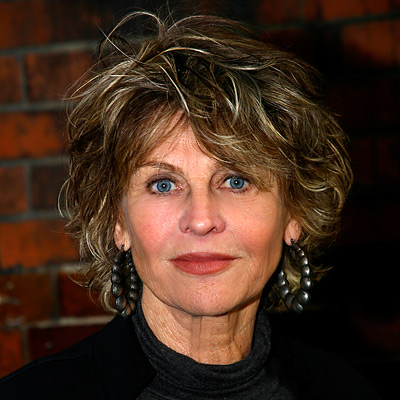Darling is a word that depends on its intonation.
Darling was nominated for five Academy Awards, including Best Picture and Best Director. Christie won the Academy Award for Best Actress for her performance as Diana Scott. Darling is cool, and raw and cold in its depiction of sexuality, both hetero and homo. The film also won the Academy Awards for Best Original Screenplay and Best Costume Design.
The film also won the Academy Awards for Best Original Screenplay and Best Costume Design.
Photographs are time capsules, histories that compress information about more than the single moment when the shutter blinked. This one ranges across two centuries before settling on one charmed decade.
The water fountain, propped on a pedestal and topped by an officious obelisk, is a relic of Victorian philanthropy, catering to the thirst of the itinerant poor. The passing matrons could be Edwardian, wearing a genteel uniform – funereal hat and oppressively long coat, gloved hands and festoons of pearls round the neck – for a promenade to the shops.  The young couple holding hands belong in a later, more relaxed era. She, idly dangling her bag from her hand rather than holding it protectively in front of her, wears a dress that could be by Mary Quant with a collar that makes her look like a sunflower. The old women are dressed for wintry old age; this sprightly pair – both with sunglasses, he with no tie and carrying a jacket he doesn't need – bask in the springtime of the body.
The young couple holding hands belong in a later, more relaxed era. She, idly dangling her bag from her hand rather than holding it protectively in front of her, wears a dress that could be by Mary Quant with a collar that makes her look like a sunflower. The old women are dressed for wintry old age; this sprightly pair – both with sunglasses, he with no tie and carrying a jacket he doesn't need – bask in the springtime of the body.
Time, like this north London thoroughfare, is a one-way street. The sun is behind all these people, and the shadows cast by bodies, slanting trees and the upright lamp-post are long. But the figure sitting down on the pavement, with a suppliant crouching beside her, is exempt from the flow; she has parked herself in a deckchair as if she were at the beach, not in a harried place of transit. For her it will always be 1965, and she will always – thanks to John Schlesinger's film – be beautiful.
The character played by Julie Christie in Darling is a go-getting model and sexual careerist; Dirk Bogarde is the television journalist who tracks her social rise. Almost 50 years later, the fable about vacuous, ephemeral celebrity remains tartly relevant. The photograph, however, is not satirical. Despite the Op Art glasses and the winklepicker shoes, Christie transcends fashion. Wearing a schoolboy's cap at a rakish angle while exhibiting – if you look very closely – a stocking top that marks the border beyond which the eye can't trespass, she also bestraddles the sexes. She bites her lip to signal a delicious, teasing indecision; Bogarde's bristling quiff alerts us to the urgency of his whispered appeal.
The overdressed frumps still plod through the dowdy, monochrome 1950s. But for me, Christie's shock of hair is as golden as the afternoon sun, her blazer dazzlingly candy-striped: in a black and white world, she radiates colour. Obelisks represent solar rays that were symbolically petrified, and the one at the kerb should be pointing its chiselled tip at her.Diana Scott (Julie Christie) is a beautiful, bored young model married to Tony Bridges (Trevor Bowen). One Day, Diana meets Robert Gold (Dirk Bogarde), a literary interviewer/director for television arts programmes, by chance when she is spotted on the street by his roving film crew and interviewed by him about young people's views on convention. Diana is invited to watch the final edit in the TV studio and there their relationship starts. After liaisons in bleak hotel rooms they leave their spouses (and, in Robert's case, children) and move into an apartment.As a couple, they become part of the fashionable London media/arts set. Initially, Diana is jealous when Robert sees his wife (Pauline Yates) while visiting his children, but she quickly loses this attachment when she mixes with the predatory males of the media,
by chance when she is spotted on the street by his roving film crew and interviewed by him about young people's views on convention. Diana is invited to watch the final edit in the TV studio and there their relationship starts. After liaisons in bleak hotel rooms they leave their spouses (and, in Robert's case, children) and move into an apartment.As a couple, they become part of the fashionable London media/arts set. Initially, Diana is jealous when Robert sees his wife (Pauline Yates) while visiting his children, but she quickly loses this attachment when she mixes with the predatory males of the media, arts and advertising scene, particularly Miles Brand (Laurence Harvey), a powerful advertising executive for the "Glass Corporation" who gets her a part in a trashy thriller after she has sex with him. The bookish Robert prefers the quiet life; it is he who now becomes jealous, but increasingly detached, depressed and lonely.Diana attends a high-class charity draw for world hunger for which she is the face. The event, adorned by giant images of African famine victims, is at the height of cynical hypocrisy and bad taste, showing Diana's rich white set, which now includes the establishment, playing at concern, gorging themselves, gambling and generally behaving
arts and advertising scene, particularly Miles Brand (Laurence Harvey), a powerful advertising executive for the "Glass Corporation" who gets her a part in a trashy thriller after she has sex with him. The bookish Robert prefers the quiet life; it is he who now becomes jealous, but increasingly detached, depressed and lonely.Diana attends a high-class charity draw for world hunger for which she is the face. The event, adorned by giant images of African famine victims, is at the height of cynical hypocrisy and bad taste, showing Diana's rich white set, which now includes the establishment, playing at concern, gorging themselves, gambling and generally behaving  decadently.Already showing signs of stress from constantly maintaining the carefree look demanded by the false, empty lifestyle to which she has become a prisoner, Diana becomes pregnant, and has an abortion.She flies to Paris with Miles for more jet-set sophistication. She finds the wild party, beat music, strip dance
decadently.Already showing signs of stress from constantly maintaining the carefree look demanded by the false, empty lifestyle to which she has become a prisoner, Diana becomes pregnant, and has an abortion.She flies to Paris with Miles for more jet-set sophistication. She finds the wild party, beat music, strip dance  mind game, cross dressing and predatory males and females vaguely repellent and intimidating, but Diana holds her own, gaining the respect of the weird crowd when she taunts Miles in the game.
mind game, cross dressing and predatory males and females vaguely repellent and intimidating, but Diana holds her own, gaining the respect of the weird crowd when she taunts Miles in the game.  Darling is still as timely today as it was then, since there are still so many women who cling to the images and myths of ideal womanhood, and whose goals lead them to believe that social climbing will lead to happiness. Our own era has an even more all-pervasive cult of celebrity than the ‘60s did.Darling was a quasi-landmark film. It introduced to the world one of the finest stars of the 60s and 70s. It also paved the way for more provocative dramas, shooting in masterful black and white for more flavor and feel. Darling remains an underrated classic nearly 50 years after its release.
Darling is still as timely today as it was then, since there are still so many women who cling to the images and myths of ideal womanhood, and whose goals lead them to believe that social climbing will lead to happiness. Our own era has an even more all-pervasive cult of celebrity than the ‘60s did.Darling was a quasi-landmark film. It introduced to the world one of the finest stars of the 60s and 70s. It also paved the way for more provocative dramas, shooting in masterful black and white for more flavor and feel. Darling remains an underrated classic nearly 50 years after its release. On her return to London, Robert calls her a whore and leaves her, for which she is not emotionally prepared. Ironically, Miles casts her as "The Happiness Girl" in the Glass Corporation's advertising campaign for a chocolate firm.On location at a palazzo near Rome, Diana smiles in her medieval/Renaissance costume and completes "The Happiness Girl" shoot. She is much taken with the beauty of the building and the landscape and gets on well with the Prince, Cesare (José Luis
On her return to London, Robert calls her a whore and leaves her, for which she is not emotionally prepared. Ironically, Miles casts her as "The Happiness Girl" in the Glass Corporation's advertising campaign for a chocolate firm.On location at a palazzo near Rome, Diana smiles in her medieval/Renaissance costume and completes "The Happiness Girl" shoot. She is much taken with the beauty of the building and the landscape and gets on well with the Prince, Cesare (José Luis  de Vilallonga), who owns the palazzo. With the gay photographer Malcolm (Roland Curram) who has created her now famous look and who is the only person who has shown her any real understanding and friendship, Diana decides to stay on in Italy. They stay in a simple house by a small harbour in Capri. Diana flirts half-heartedly with Catholicism. They are visited by Cesare, who arrives in a huge launch, invites them on board and proposes to Diana. Cesare is widowed and has several children, the oldest of whom is about the same age as Diana. Diana politely declines his proposal, but Cesare leaves the offer open.Diana returns to London, and still living in the flat she shared with Robert, has a party with Miles and other assorted media characters.. Robert has aged. Soon disillusioned with Miles and the vacuous London jet set, Diana flirts with the Catholic Church
de Vilallonga), who owns the palazzo. With the gay photographer Malcolm (Roland Curram) who has created her now famous look and who is the only person who has shown her any real understanding and friendship, Diana decides to stay on in Italy. They stay in a simple house by a small harbour in Capri. Diana flirts half-heartedly with Catholicism. They are visited by Cesare, who arrives in a huge launch, invites them on board and proposes to Diana. Cesare is widowed and has several children, the oldest of whom is about the same age as Diana. Diana politely declines his proposal, but Cesare leaves the offer open.Diana returns to London, and still living in the flat she shared with Robert, has a party with Miles and other assorted media characters.. Robert has aged. Soon disillusioned with Miles and the vacuous London jet set, Diana flirts with the Catholic Church  again. Impulsively, she flies out to Italy and marries the Prince, which proves to be ill-considered. Though waited on hand and foot by servants, she is almost immediately abandoned in the vast palazzo by Cesare, who has gone to Rome, presumably to visit a mistress.Diana flees to London to Robert, who, taking advantage of her emotional vulnerability, charms her into bed and into what she thinks is a stable long-term
again. Impulsively, she flies out to Italy and marries the Prince, which proves to be ill-considered. Though waited on hand and foot by servants, she is almost immediately abandoned in the vast palazzo by Cesare, who has gone to Rome, presumably to visit a mistress.Diana flees to London to Robert, who, taking advantage of her emotional vulnerability, charms her into bed and into what she thinks is a stable long-term  relationship. In the morning, in self-disgust, he tells her that he's leaving her and that he fooled her only as an act of revenge. He reserves a flight to Rome, packs her into his car and takes her to Heathrow airport to send her back to her life as the Princess Della Romita. At the airport, Diana is hounded by the press, who address her reverentially as Princess. She boards .
relationship. In the morning, in self-disgust, he tells her that he's leaving her and that he fooled her only as an act of revenge. He reserves a flight to Rome, packs her into his car and takes her to Heathrow airport to send her back to her life as the Princess Della Romita. At the airport, Diana is hounded by the press, who address her reverentially as Princess. She boards .

 The film also won the Academy Awards for Best Original Screenplay and Best Costume Design.
The film also won the Academy Awards for Best Original Screenplay and Best Costume Design.


 The young couple holding hands belong in a later, more relaxed era. She, idly dangling her bag from her hand rather than holding it protectively in front of her, wears a dress that could be by Mary Quant with a collar that makes her look like a sunflower. The old women are dressed for wintry old age; this sprightly pair – both with sunglasses, he with no tie and carrying a jacket he doesn't need – bask in the springtime of the body.
The young couple holding hands belong in a later, more relaxed era. She, idly dangling her bag from her hand rather than holding it protectively in front of her, wears a dress that could be by Mary Quant with a collar that makes her look like a sunflower. The old women are dressed for wintry old age; this sprightly pair – both with sunglasses, he with no tie and carrying a jacket he doesn't need – bask in the springtime of the body.
 The young couple holding hands belong in a later, more relaxed era. She, idly dangling her bag from her hand rather than holding it protectively in front of her, wears a dress that could be by Mary Quant with a collar that makes her look like a sunflower. The old women are dressed for wintry old age; this sprightly pair – both with sunglasses, he with no tie and carrying a jacket he doesn't need – bask in the springtime of the body.
The young couple holding hands belong in a later, more relaxed era. She, idly dangling her bag from her hand rather than holding it protectively in front of her, wears a dress that could be by Mary Quant with a collar that makes her look like a sunflower. The old women are dressed for wintry old age; this sprightly pair – both with sunglasses, he with no tie and carrying a jacket he doesn't need – bask in the springtime of the body.



 Darling
Darling



Why hasn't QE2 honored her with a CBE? C'mon, there's "Sir Mick Jagger," but no "Dame Julie Christie". Has Ms. Christie declined the honor?
ReplyDelete